I’ve been asked quite a bit about my favorite how-to art books, and here is my answer. I will divide them into beginner’s best and then those that are good no matter where you are, but you must know that rarely do I find a book a dud! I can almost always find some value in another artist’s experience. That said, I was given some books that I will sell or give away — I simply don’t find them interesting or valuable or engaging enough to ever crack a second time.
I put books into categories:
- Those that set out to teach you
- Those that inspire
The former category is more straightforward. Either someone is pretty good at reaching their target audience and showing them great ways to accomplish their goals, or introduces them to ideas they never even considered, or they aren’t good teachers! I have eons of teaching experience at both college and grade school level (and in-between) and some people are good at what they do but not good at telling others how to get there. When reviewing these books I will take into account that just because I KNOW the subject, do I think it is a good book, one I can imagine writing?
The latter category is, I think, the most subjective, because it has a lot to do with your personality, what you like, and your experience. I will save that subject for the next post! This post will deal books that are akin to teaching manuals. The first two books changed my drawing life, and from there I review a few other favorites. I’ve owned some for 40 years.
The first two every artist should have and work with!
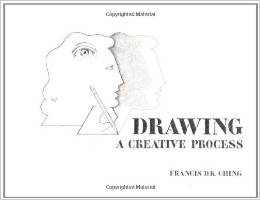 Frank Ching’s Drawing, A Creative Process, has no lesson plans, but a detailed explanation of all the components that go into making a mark that others can read are clearly and beautifully outlined. From these, in your drawing and seeing experience, you will begin to change the way you perceive your subjects and your line-work will follow suite. From the beginning he covers of tools and making a line, to chapters on shadows, circles, ellipses, vanishing points, perspective, all explained simply and easily.
Frank Ching’s Drawing, A Creative Process, has no lesson plans, but a detailed explanation of all the components that go into making a mark that others can read are clearly and beautifully outlined. From these, in your drawing and seeing experience, you will begin to change the way you perceive your subjects and your line-work will follow suite. From the beginning he covers of tools and making a line, to chapters on shadows, circles, ellipses, vanishing points, perspective, all explained simply and easily.
There are some types of drawing that artists might not use (but architects must learn to use) but that is a very small portion of the book. Ching’s book helped me to develop the skills to put what was in my mind onto paper so I could share the ideas with another person, like learning to speak a visual language. At any time, I can pick up a pen and draw what I am trying to communicate in my imagination.
Plus, Ching’s book is graphically beautiful to my architectural eyes.
“Ideas can be made visible in a drawing to promote visual thinking and further stimulate the imagination. Once what is seen or imagined is made visible in a drawing, the image takes on a life of its own and communicates graphically.” Frank Ching
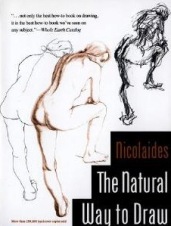 The Natural Way to Draw, by Kimon Nicolaides, is the best book I’ve read on learning to coordinate your eye-to-hand movements. I have been studying with him (through his book) for 40 years. His book has taught artists for many years, and inspired the books of other drawing teachers, like Betty Edwards.
The Natural Way to Draw, by Kimon Nicolaides, is the best book I’ve read on learning to coordinate your eye-to-hand movements. I have been studying with him (through his book) for 40 years. His book has taught artists for many years, and inspired the books of other drawing teachers, like Betty Edwards.
The crux of his teachings is that drawing can be broken down into activities to help you see various aspects of a subject:
- gesture drawing, which is fast and catches what I think of as the essence of the object, stance, or movement;
- contour drawing, which taught me to look carefully at what I was drawing and not at the paper, or, seeing what was in front of me rather than what I thought the object should look like;
- and a toned drawing style that captures mass, weight, shadow, etc.
He outlines ways of approaching subjects that are excellent for the beginning artist struggling with eye-to-hand coordination, but also for the experienced artist in warm-ups to sketching sessions. Unlike Ching, his emphasis is on lessons and on living forms. The two books together compliment each other and complete a drawing course.
“The sooner you make your first thousand mistakes the sooner you will be able to correct them.” Kimon Nicolaides
 I personally loved The Zen of Seeing by Frederick Franck.
I personally loved The Zen of Seeing by Frederick Franck.
I won’t put it in the top two but all Franck’s books are guileless in their open teaching style, and are, of course, combined with a Zen Buddhist way of thinking. (Despite a few strange reviews on Amazon, this is not a Buddhist book; it is an art book.) If you are having trouble getting out of your head then I strongly recommend Zen of Seeing, because his poetic writing will turn you toward how to see the world clearly, how to drop judgements, how to let seeing the world choose what you draw, how to turn drawing into a meditation, and the importance of everyday beauty all around you.
“When I see, suddenly I am all eyes, I forget this ME,
am liberated from it and dive into the reality of what confronts me, become part of it, and participate in it. I no longer label, no longer choose.” Frederick Franck
 Moving to newer books, the best for a beginning urban sketcher is Sketch! by France Belleville-Van Stone. It is the book I would write, if I had her personal experiences. Not having a degree in art makes it all the better, as she is infinitely accessible to people just starting out. Her writing is straightforward, clear, and invigorating. Baby steps, she takes you through materials, structuring your drawing time even if you are busy, and gives a beginner permission to make mistakes. She even covers digital sketching — not my idea of fun, but good for those who want to explore it!
Moving to newer books, the best for a beginning urban sketcher is Sketch! by France Belleville-Van Stone. It is the book I would write, if I had her personal experiences. Not having a degree in art makes it all the better, as she is infinitely accessible to people just starting out. Her writing is straightforward, clear, and invigorating. Baby steps, she takes you through materials, structuring your drawing time even if you are busy, and gives a beginner permission to make mistakes. She even covers digital sketching — not my idea of fun, but good for those who want to explore it!
“I teach French and every year I explain the difference between “language learning” and “language acquisition. In a nutshell, we acquire our mother tongue but learn a foreign one. Your own curiosity, which is driven by the need to understand and communicate, is the fertile soil where your language grows. The same goes for drawing. There are no shortcuts and no tricks, just the plain practice of drawing, screwing up, and drawing some more.” France Belleville-Van Stone
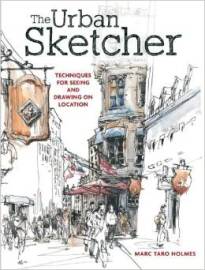 My personal favorite how-to urban sketching book is The Urban Sketcher, by Marc Taro Holmes. I don’t think this is a beginning book, but I do think a beginner would learn by having this book alongside the other books, and playing around with Marc’s techniques when up to the challenge. He is clear, and his lesson plans, which normally I am not fond of, are in good order and I think that if you’ve been making marks for a while you can bounce around to what interests you. His drawings are inspiring, offering something toward both the beginner and more advanced person can aspire. As someone moving from acrylics to watercolors, Marc is someone whose blogs I follow to learn from: Tarosan, especially, but also Citizen Sketcher.
My personal favorite how-to urban sketching book is The Urban Sketcher, by Marc Taro Holmes. I don’t think this is a beginning book, but I do think a beginner would learn by having this book alongside the other books, and playing around with Marc’s techniques when up to the challenge. He is clear, and his lesson plans, which normally I am not fond of, are in good order and I think that if you’ve been making marks for a while you can bounce around to what interests you. His drawings are inspiring, offering something toward both the beginner and more advanced person can aspire. As someone moving from acrylics to watercolors, Marc is someone whose blogs I follow to learn from: Tarosan, especially, but also Citizen Sketcher.
“Urban sketching gets you out into the world looking for things worth drawing. It puts you into a mindset where daily life is part of a larger artistic adventure.” Marc Taro Holmes.
Finally, 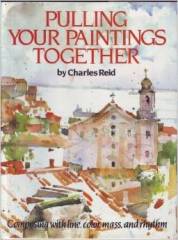 I was given a Charles Reid book, Pulling Your Paintings Together, and enjoy his teaching style. He uses student work and his own work to show problems that arise and ways to solve them, which is exactly what I am needing about now. The emphasis is on how to approach laying in color on paintings, and composition — or the ways you can get into a mess. His style is colorful and loose, which is one of the things that draws me to him, although his books are more than inspiration. Now that I’ve found him, I am sure that over the years I will buy a few more of his books.
I was given a Charles Reid book, Pulling Your Paintings Together, and enjoy his teaching style. He uses student work and his own work to show problems that arise and ways to solve them, which is exactly what I am needing about now. The emphasis is on how to approach laying in color on paintings, and composition — or the ways you can get into a mess. His style is colorful and loose, which is one of the things that draws me to him, although his books are more than inspiration. Now that I’ve found him, I am sure that over the years I will buy a few more of his books.
I have bought a lot of books. I am a book-person, so this is one of those things that I do. I hesitate to mention books I really think are dogs, and a couple would surprise you. If you can see the books in person it is so much better, because then if you have any experience at all you can judge whether the layout and style of teaching is going to resonate for you.
Next post of this nature will be on the most inspiring books!




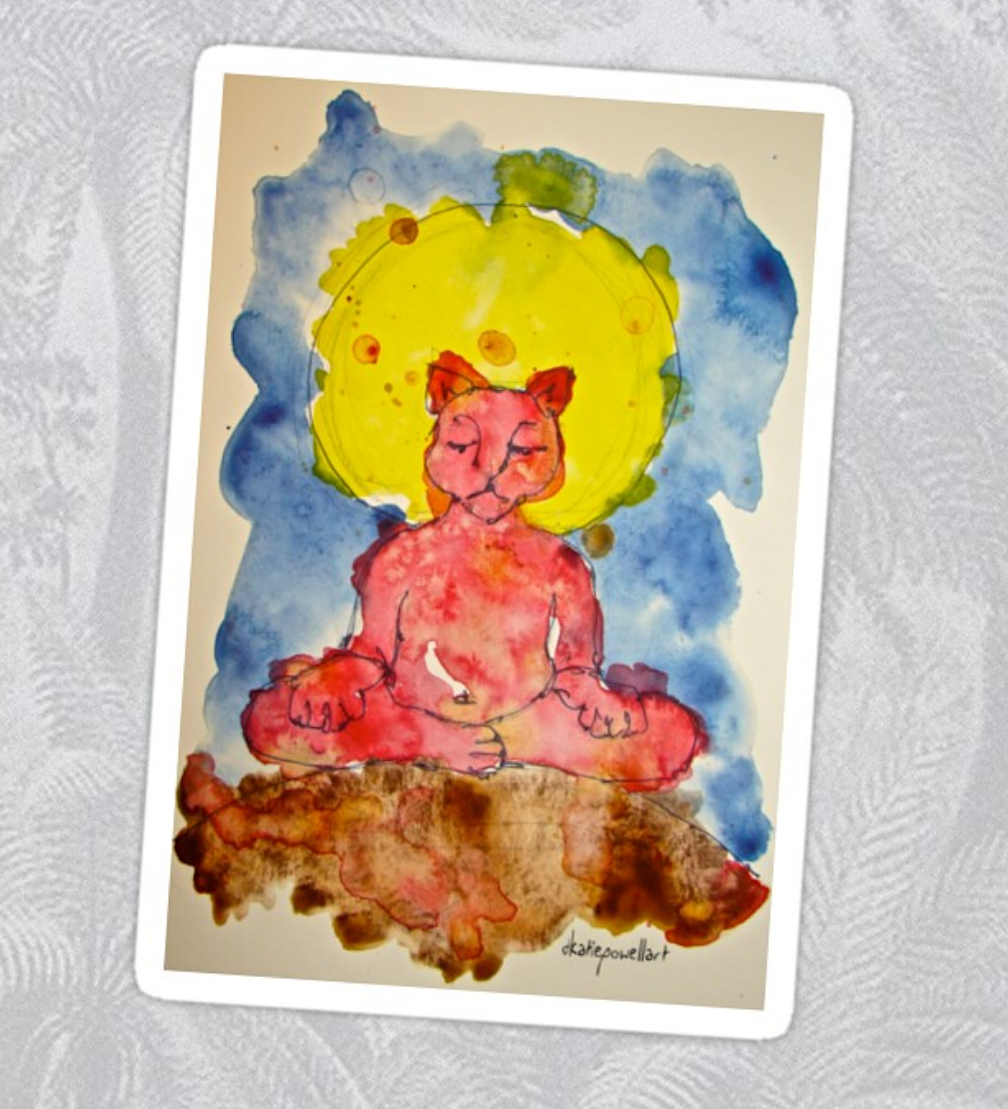

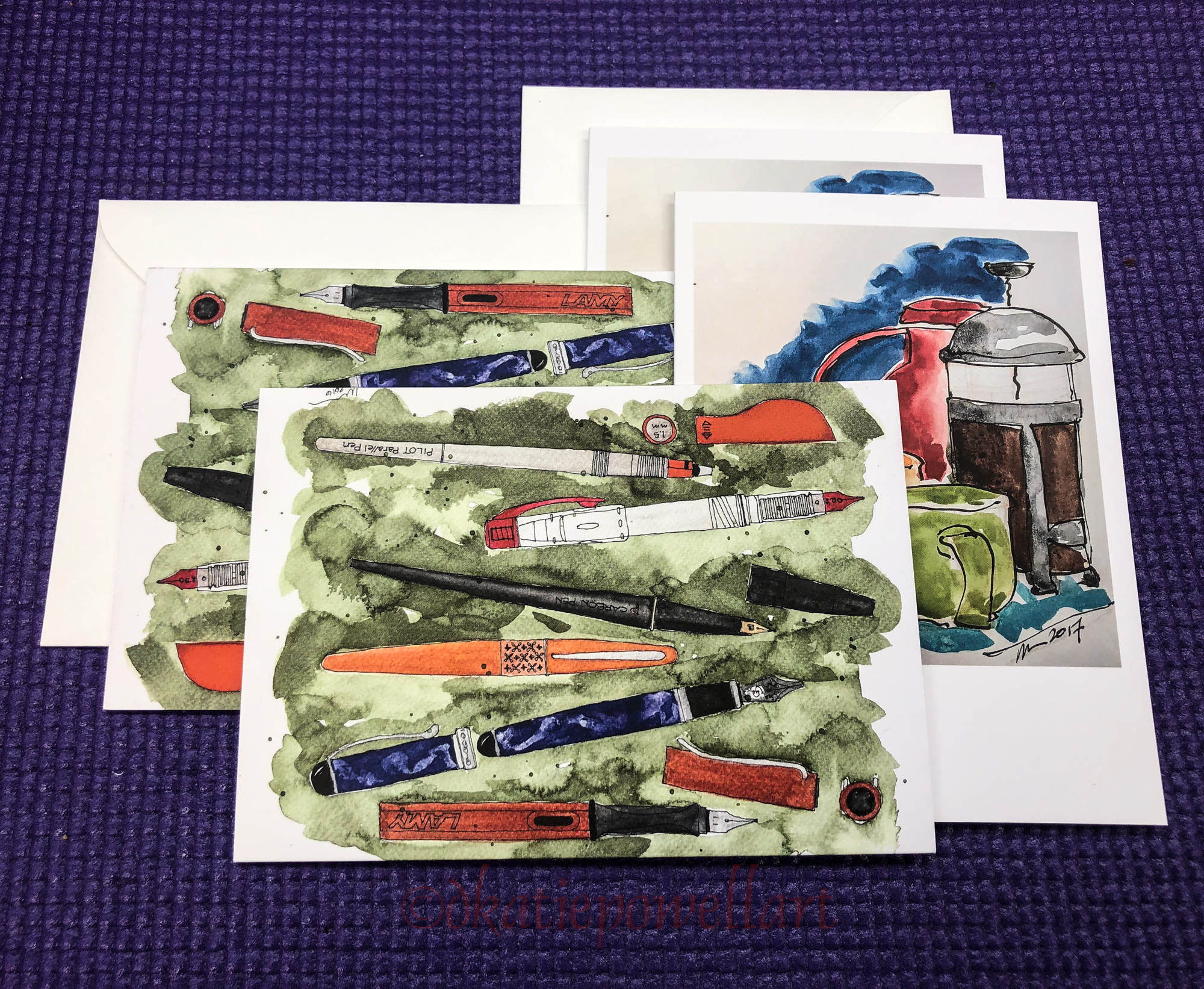

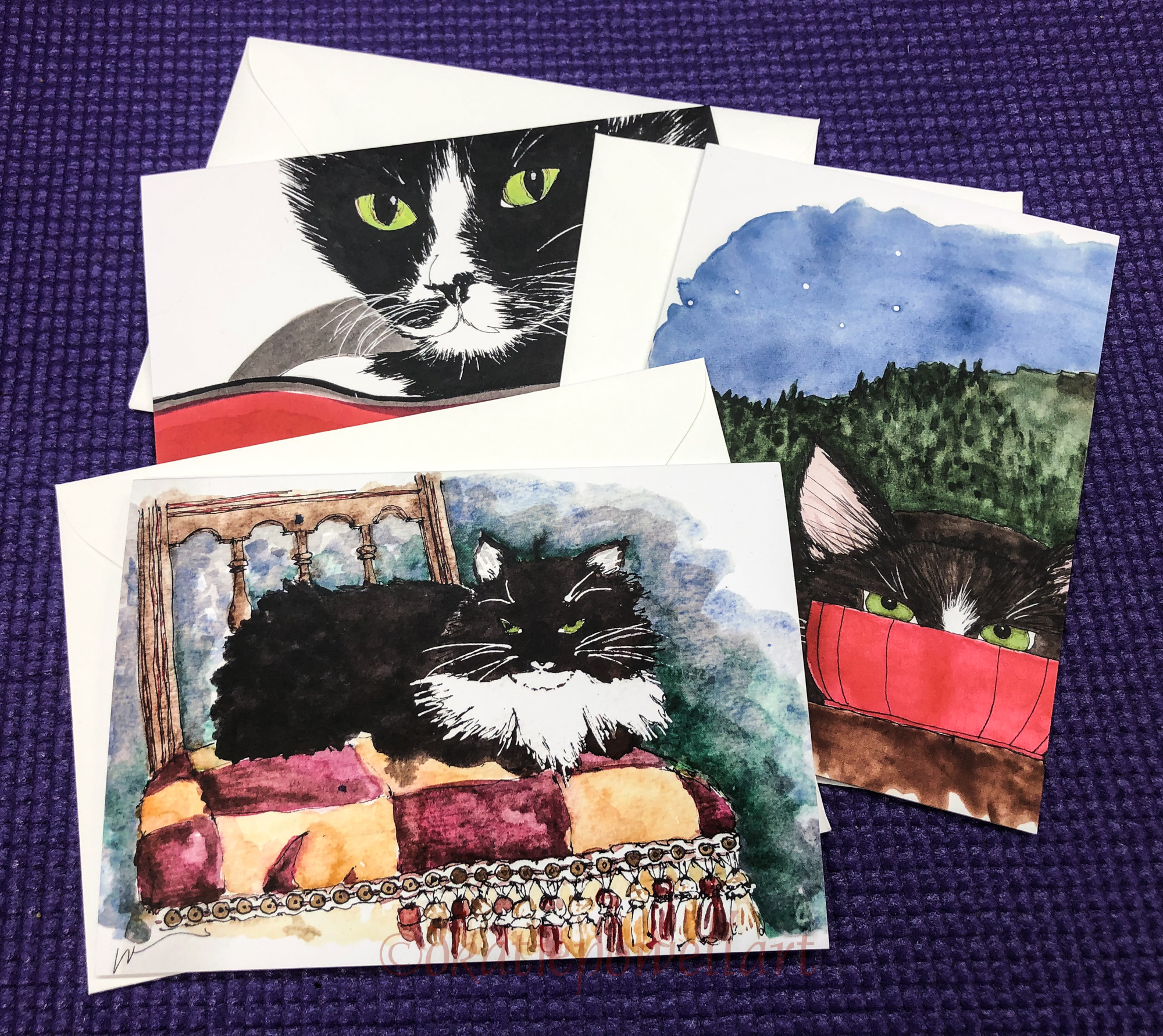





Reblogged this on bemuzin and commented:
Although we have some crossover in readers, I thought some of you bidding, wanna-be artists would appreciate this excellent list of recommendations from one of my favorite artists, mentor and cheerleader.
I’m buried in year end, new year paperwork this week, and Katie’s post is a perfect way for me to feature her while slogging through my weeknof administrative chores.
LikeLike
Katie – great stuff! Am reblogging this. Thank you!!
LikeLike
Just exactly what I needed. SammyD sent me here. I am reinspired, thank you!
LikeLike
I serve to inspire!
LikeLike
Thankyou for this very informative post. I am a newish fan of Nicolaides, having been inspired by previous discussion of him on your blog. I also read a lot of other how-to art books, and sometimes the representation of contour and gestural drawing, in some of these books, is a bit vague. I then head straight back to Nicolaides for a refresher, which gets me back on track. I love everything about Nicolaides. His book contains excellent instruction. Thankyou.
My most favourite nature journaling books are by Clare Walker Leslie. It’s interesting that Leslie includes references to both Nicolaides, and Franck, in her nature books. Goes to show two of your first three picks are all round favourites. It’s not surprising nature drawing books do not mention the architectural style that is Ching. However I have confidence in the book reviews here as they also represent Charles Reid very accurately…one of my long-time favourites. And so I have ordered a copy of Ching and I eagerly await its arrival in the post. In the meantime I need to continue to take heed of Nicolaides’ advice and do my one composition a day – whether or not it looks like something, it doesn’t matter! Aah, Nicolaides is great.
LikeLike
I will have to look at Leslie’s books now — aaah — went to look and know Keeping a Nature Journal — yes she is good!
I find that gestures drawings can be done on the fly, on any paper, in any venue. I did a crazy one sitting aiting for a long train the other day . . . kept the pen moving!
LikeLike
I love these book ideas! I will have to put Zen of Seeing and Pulling Your Paintings Together on my Amazon list.
LikeLike
Tracye, the funny thing is that some of the older books can be had for a few $$, which is so nice. I bought my oldest new (they were relatively new releases and no internet search), but am a big fan of used books! Of course, my Ried book unfortunately smells like cigarettes, the down side to paying pennies!
LikeLike
This is a great list! I’ve got the Natural Way to Draw. I think I’ll pull it off the shelf and do a little playing. Thanks for the inspiration! Perhaps I’ll see if I can find Ching’s creative process book. Then who know what may happen?!
LikeLike
You can find Ching’s online in many forms — his oldest one (which is mine) is so inexpensive in used books, because he has a new edition. You should post your sketches on your blog!
LikeLiked by 1 person